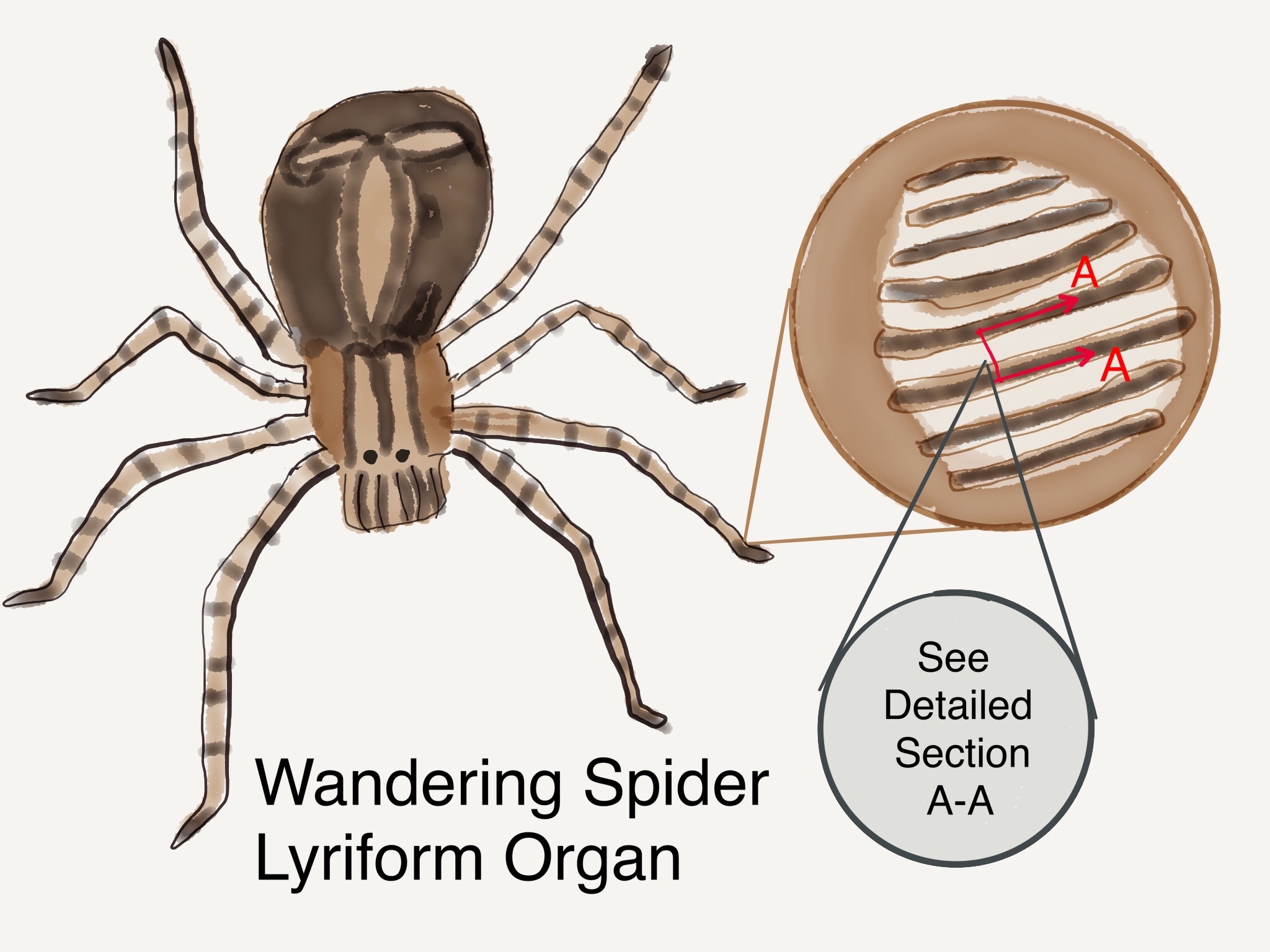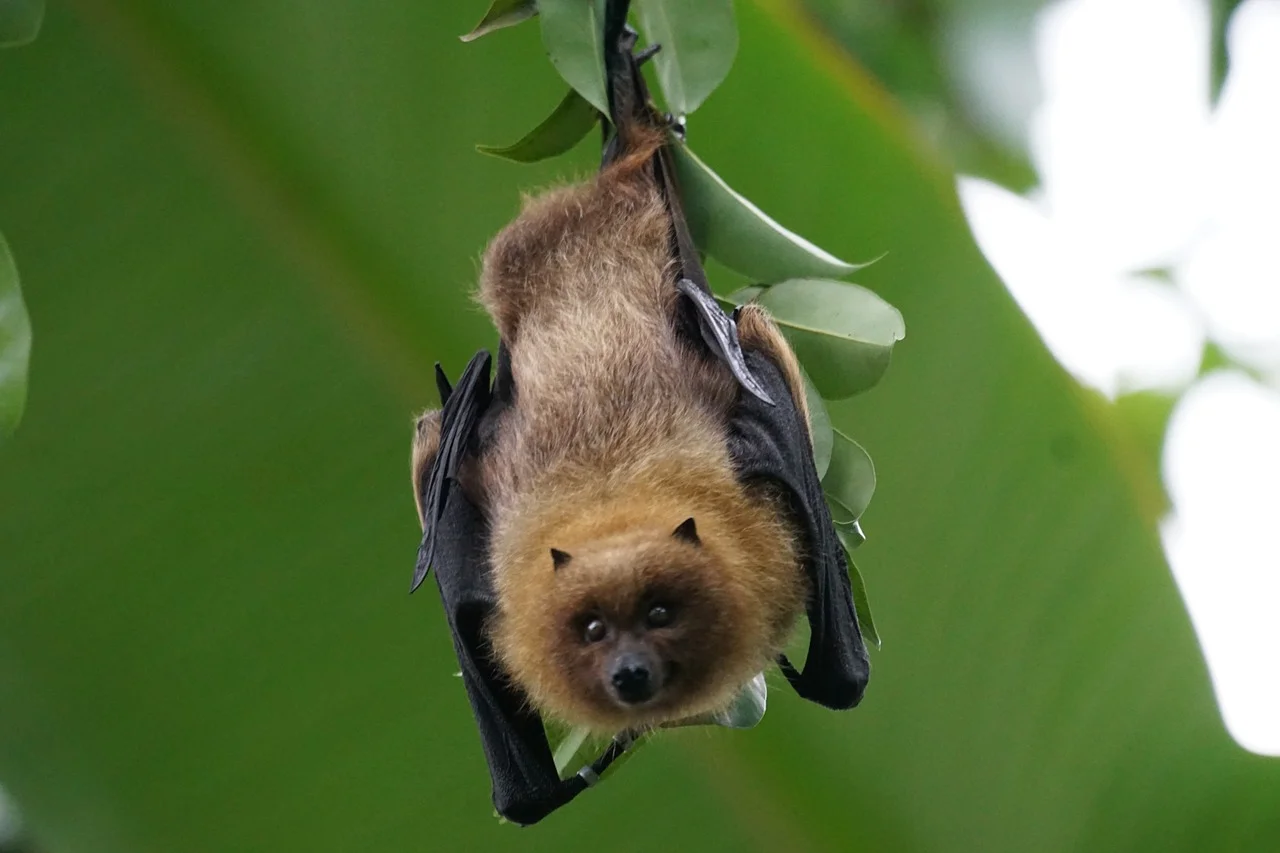Charlotte's Web-less Cousin and Biomimetic Vibration Sensing

The gentle lap of water upon the shore of a freshwater lake is often disturbed by the annoying buzz of a pesky mosquito or the sharp bite of a black fly. Besides some birds and bats, spiders gracefully consume these disturbing insects. Many humans scream or grab a shoe to smash house bound spiders, but my modus operandi is to relocate them for an insect smorgasbord on my patio. While many spiders weave webs for capturing food, the wandering spider (Cupiennius salei) in South and Central America has adapted to web-less living.
The wandering spider remains hidden in the shelter of stalkless, leafed plants by day and uses the same leaf as its hunting platform at night. Its hunting prowess relies on a unique structure called a lyriform organ to sense vibrations transmitted through the plant. The spider can distinguish the vibrational differences between the wind-induced plant movement (less than 10 Hz), a potential mate sending communication signals (100 HZ), and the movements of potential prey (400-900Hz). (1) The lyriform organ is a rippled, slit-like structure built into the spider's exoskeleton on the legs and body. Approximately 3300 of these slits are on one spider, and 1750 of these slits compose 144 groupings. (2) Each ridge is 1-2 nanometer wide and 10 - 200 nanometers long. (2) The trough between each peak is a two-layer membrane filled with viscous sodium-rich lymph and connected by a long dendrite nerve. As incoming vibrations deform the lyriform organ, the inner and outer membrane movement activates the nerves transmitting sensory information to the spider.
Drawing by Nature Comes Standard, LLC
Drawing by Nature Comes Standard, LLC
The lyriform organ resembles an engineering strain gauge created by a series of repeating ribbed structures made with a viscous fluid sandwiched between two materials. In one experiment, researchers created a strain-based sensor modeled after the wandering spider formed from a thin layer of metal mounted to a viscoelastic polymer. The experimental device picked-up subtle voice sounds in a noisy environment and could measure heartbeats as a physiological sensor. (3) These spider-based sensors could improve future applications in the communication and medical industry. What other regenerative designs can you imagine that could benefit from spider-like vibration sensing?
References:
1. Young, Seth L., Chyasnavichyus, Marius, Barth, Friedrich G., Zlotnikov, Igor, Politi, Yael, and Tsukruk, Vladimir V. (2016) “Micromechanical properties of strain-sensitive lyriform organs of a wandering spider (Cupiennius salei)”. Acta Biomaterialia 41:40–51
2. Barth, Friedrich G. (2002) “Spider senses – technical perfection and biology”. Zoology 105: 271–285
3. D. Kang, P.V. Pikhitsa, Y.W. Choi, C. Lee, S.S. Shin, L. Piao, B. Park, K.Y. Suh, T.I. Kim, M. Choi (2014) "Ultrasensitive mechanical crack-based sensor inspired by the spider sensory system”. Nature 516: 222-226
Photograph: Andreas Key (2015, November 18) Wandering spider, Ctenidae
from Ecuador. https://www.flickr.com/photos/andreaskay/29049798433/in/photostream/







